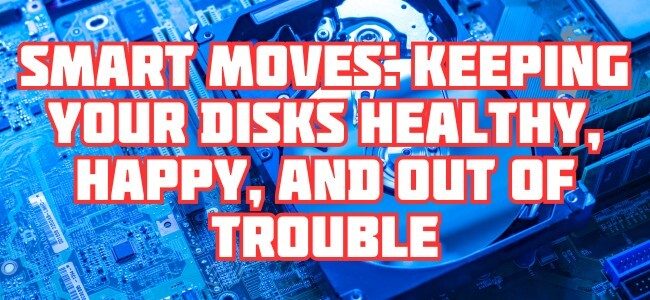🔜 SMART Moves: Keeping Your Disks Healthy, Happy, and Out of Trouble
You know how your body gives you warning signs before you get sick? Your server drives do the same – if you know how to listen. And no, they won’t cough or complain out loud… but they will whisper their problems through something called SMART.
So grab your tea (or coffee, or energy drink of choice) and let’s talk about hard drives, flash storage, failure prevention – and what to do when your server says, “I don’t feel so good.”
What Is SMART?
SMART stands for Self-Monitoring, Analysis and Reporting Technology. Sounds like a spy gadget, right? It’s actually the built-in diagnostics system in HDDs, SSDs, and NVMe drives. Think of it as a health log that tracks how your drive is doing – like a black box, but hopefully before the crash.
With SMART, your drive reports on things like:
- Temperature
- Power-on hours
- Read/write error rates
- Reallocated sectors (we’ll get to that)
- Wear level (for SSDs/NVMe)
- And around 40+ other health indicators depending on the drive
You can check this info with tools like smartctl, smartd, or any decent Linux health monitor. And yes, your lovely Mac has it too under the hood.
HDD vs SSD vs NVMe – Same SMART, Different Stories
All drives speak SMART, but they speak it a little differently.
Traditional HDDs:
These spinning relics (still great for bulk storage) have a long list of SMART attributes. If Reallocated_Sector_Ct is above zero – it means bad sectors have already been replaced with spares. Sounds cool, right? Wrong. It’s basically your drive screaming, “I’m aging poorly!”
TL;DR: Reallocated sectors on an HDD = get ready to replace it. Like, now.
SSDs:
They don’t spin, so they don’t suffer from the same mechanical issues. A few reallocated sectors? Not a big deal – it’s expected over time. Instead, focus on:
- Wear Leveling Count
- Available Reserved Blocks
- Endurance Remaining
TL;DR: SMART on SSDs is more about wear than doom. Chill… but keep an eye on it.
NVMe:
The cool kids of storage. Fast, small, no SATA cable mess. NVMe has its own SMART attributes (usually via nvme-cli), but the same rules apply. Watch Percentage Used, Media Errors, and Critical Warnings.
TL;DR: NVMe gives you fewer but clearer signs. If it screams, it means business.
What If SMART Says “Not OK”?
Don’t panic. Don’t smash the server. And for the love of uptime, don’t run rm -rf / thinking it’ll help.
Here’s what to do:
- Relax. Drink some tea.
- Check your backup. (You do have one, right? RIGHT?)
- Send the SMART report to our support team. Include error counts, drive model, and affected slot.
- Wait for drive replacement. We’ll handle the rest – our support heroes are on it.
- Use RAID. Always. That’s why every ITLDC server comes with at least two drives – so if one fails, the other keeps on rolling.
No RAID, no backup, no peace.
Closing Thoughts
Your drive may not talk, but it writes. SMART is its diary – and if you read it regularly, you can avoid drama, downtime, and unplanned therapy sessions. Whether it’s your trusty SSD or your shiny new NVMe, keep an eye on that health report.
And remember: Drives die. Backups don’t. RAID is your safety net. ITLDC is your infrastructure partner.
Until next time – monitor smart, and host smarter.

